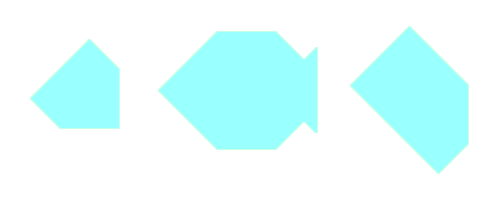
| Answer the following questions: | |
| How many tangram pieces have at least one right angle? | |
| How many tangram pieces have angles which are larger than right angles? | |
| How many tangram pieces have more than one right angle? | |
| How many tangram pieces have one or more angles smaller than a right angle? | |
| Build a square using any 2 pieces. Now try to build one using 3, then 4, 5, 6 and 7 pieces. | |
| Build a rectangle (squares don't count here!) using any 2 pieces. Now try using any 3, then 4, then 5, 6 and 7 pieces. | |
| How many different sized trapezoids can you build? | |


